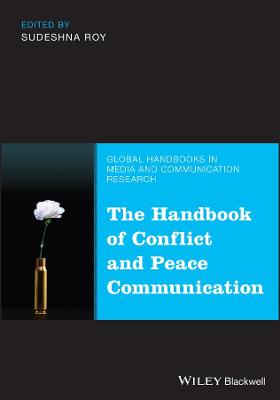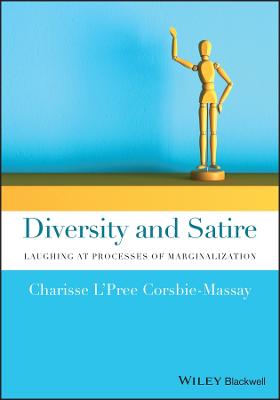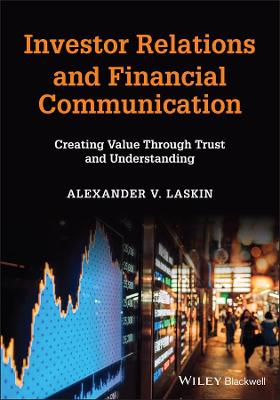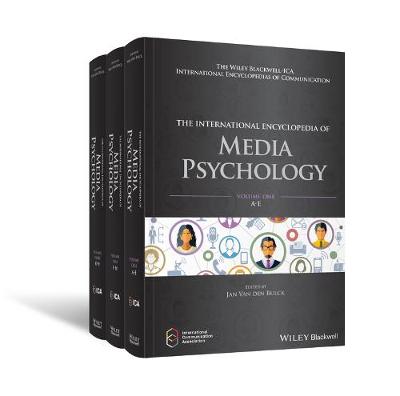Theorizing Crisis Communication
 -15%
portes grátis
-15%
portes grátis
Theorizing Crisis Communication
Seeger, Matthew W.; Sellnow, Timothy L.
John Wiley and Sons Ltd
02/2021
368
Mole
Inglês
9781119615910
15 a 20 dias
538
Descrição não disponível.
Acknowledgments ix
Foreword xi
1 Introduction to Crisis Communication 1
Defining Crisis 4
Defining Communication 12
Plan for This Book 19
Conclusion 20
2 Theorizing about Crisis and Crisis Communication 21
Critiquing Theory 31
Conclusion 32
3 Theories of Communication and Warning 33
Detection of Risks 34
Warnings 36
Hear-Confirm-Understand-Decide-Respond Model 44
Applications of the Hear-Confirm-Understand-Decide-Response Model 46
Strengths and Weaknesses of the Hear-Confirm-Understand-Decide-Response Model 47
Protective Action Decision Model 48
Applications of the PADM 52
Strengths and Weaknesses of the PADM 54
Integrated Model of Food Recall 55
Applications of the Integrated Model of Food Recall 58
Strengths and Weaknesses of the Integrated Model of Food Recall 58
Emerging Warning Systems 59
Conclusion 61
4 Theories of Communication and Crisis Development 63
Assumptions of Stage Models 66
Three-Stage Model 69
Applications of the Three-Stage Model 71
Strengths and Weaknesses of the Three-Stage Model 72
Fink's Four-Stage Cycle 72
Applications of Fink's Four-Stage Cycle 74
Strengths and Weaknesses of Fink's Four-Stage Cycle 75
Turner's Six-Stage Sequence of Failure in Foresight 76
Applications of Turner's Six-Stage Sequence of Failure in Foresight 78
Crisis and Emergency Risk Communication 79
Applications of CERC 80
Strengths and Weaknesses of CERC 84
Conclusion 85
5 Theories of Communication and Crisis Outcomes 87
Organizational Learning 88
Sensemaking 94
Organizational Legitimacy 98
Balance Theory 102
Stealing Thunder 105
Situational Crisis Communication Theory 108
Discourse of Renewal 113
Conclusion 117
6 Theories of Communication and Emergency Coping and Response 119
Assumptions of Communication and Emergency Response 121
Chaos Theory and Emergent Self-Organization 122
Theories of Communication and Crisis Coordination 128
Communication and Community Resilience 137
Four-Channel Model of Communication 148
Integrated Crisis Mapping Model 153
Conclusion 155
7 Theories of Crisis Communication and Legacy Media 157
The Legacy Mass Media 159
News Framing Theory 160
Focusing Events and Agenda Setting 163
Exemplification Theory 168
Uses and Gratifications Theory 171
Cultivation Theory 175
Media System Dependency Theory 178
Crisis News Diffusion 182
Diffusion of Innovations 185
Conclusion 189
8 Theories about Social Media and Crisis Communication 192
Social Information Processing Theory 196
Warranting Theory 198
The MAIN Model 201
Dialogic Theory of Public Relations 204
Social-Mediated Crisis Communication Model 208
Emerging Theories of Social Media in Crisis Communication 211
Conclusion 212
9 Theories of Influence and Crisis Communication 213
Apologia 215
Image Repair 218
Kategoria 223
Dramatism 227
Narrative Theory 231
Message Convergence Framework 234
Conclusion 237
10 Theories of Communication and Risk Management 239
Social Amplification of Risk Framework 242
Risk Information Seeking and Processing Model 245
Mindfulness 248
High Reliability Organizations 252
The Precautionary Principle 258
Cultural Theory 262
The IDEA Model 266
Conclusion 270
11 Theories of Crisis Communication and Ethics 271
Ethics 272
Crisis Communication as an Ethical Domain 275
Responsible Communication 278
Significant Choice 280
The Ethic of Care 282
Virtue Ethics 284
Justice 286
Applications of Moral Theory to Crisis 287
Conclusion 292
12 Applying Theories of Crisis Communication 293
Choosing a Theory 294
The Rationale for Asking Question 295
Questions Focusing of Ontology 295
Questions Focusing on Axiology 297
Questions Focusing on Epistemology 298
Selecting a Data Set and Method 300
Selecting Literature for Review 302
Forming Conclusions and Implications of Research 303
The Practicality of Theory in Understanding Crisis
Communication 304
Persistent Challenges 305
Invisible Success 305
Global Causation 306
Insufficient Instruction for Self-Protection 306
Persistent Opportunities 307
New Perspectives for Study 308
A Final Word 310
References 311
Index 348
Foreword xi
1 Introduction to Crisis Communication 1
Defining Crisis 4
Defining Communication 12
Plan for This Book 19
Conclusion 20
2 Theorizing about Crisis and Crisis Communication 21
Critiquing Theory 31
Conclusion 32
3 Theories of Communication and Warning 33
Detection of Risks 34
Warnings 36
Hear-Confirm-Understand-Decide-Respond Model 44
Applications of the Hear-Confirm-Understand-Decide-Response Model 46
Strengths and Weaknesses of the Hear-Confirm-Understand-Decide-Response Model 47
Protective Action Decision Model 48
Applications of the PADM 52
Strengths and Weaknesses of the PADM 54
Integrated Model of Food Recall 55
Applications of the Integrated Model of Food Recall 58
Strengths and Weaknesses of the Integrated Model of Food Recall 58
Emerging Warning Systems 59
Conclusion 61
4 Theories of Communication and Crisis Development 63
Assumptions of Stage Models 66
Three-Stage Model 69
Applications of the Three-Stage Model 71
Strengths and Weaknesses of the Three-Stage Model 72
Fink's Four-Stage Cycle 72
Applications of Fink's Four-Stage Cycle 74
Strengths and Weaknesses of Fink's Four-Stage Cycle 75
Turner's Six-Stage Sequence of Failure in Foresight 76
Applications of Turner's Six-Stage Sequence of Failure in Foresight 78
Crisis and Emergency Risk Communication 79
Applications of CERC 80
Strengths and Weaknesses of CERC 84
Conclusion 85
5 Theories of Communication and Crisis Outcomes 87
Organizational Learning 88
Sensemaking 94
Organizational Legitimacy 98
Balance Theory 102
Stealing Thunder 105
Situational Crisis Communication Theory 108
Discourse of Renewal 113
Conclusion 117
6 Theories of Communication and Emergency Coping and Response 119
Assumptions of Communication and Emergency Response 121
Chaos Theory and Emergent Self-Organization 122
Theories of Communication and Crisis Coordination 128
Communication and Community Resilience 137
Four-Channel Model of Communication 148
Integrated Crisis Mapping Model 153
Conclusion 155
7 Theories of Crisis Communication and Legacy Media 157
The Legacy Mass Media 159
News Framing Theory 160
Focusing Events and Agenda Setting 163
Exemplification Theory 168
Uses and Gratifications Theory 171
Cultivation Theory 175
Media System Dependency Theory 178
Crisis News Diffusion 182
Diffusion of Innovations 185
Conclusion 189
8 Theories about Social Media and Crisis Communication 192
Social Information Processing Theory 196
Warranting Theory 198
The MAIN Model 201
Dialogic Theory of Public Relations 204
Social-Mediated Crisis Communication Model 208
Emerging Theories of Social Media in Crisis Communication 211
Conclusion 212
9 Theories of Influence and Crisis Communication 213
Apologia 215
Image Repair 218
Kategoria 223
Dramatism 227
Narrative Theory 231
Message Convergence Framework 234
Conclusion 237
10 Theories of Communication and Risk Management 239
Social Amplification of Risk Framework 242
Risk Information Seeking and Processing Model 245
Mindfulness 248
High Reliability Organizations 252
The Precautionary Principle 258
Cultural Theory 262
The IDEA Model 266
Conclusion 270
11 Theories of Crisis Communication and Ethics 271
Ethics 272
Crisis Communication as an Ethical Domain 275
Responsible Communication 278
Significant Choice 280
The Ethic of Care 282
Virtue Ethics 284
Justice 286
Applications of Moral Theory to Crisis 287
Conclusion 292
12 Applying Theories of Crisis Communication 293
Choosing a Theory 294
The Rationale for Asking Question 295
Questions Focusing of Ontology 295
Questions Focusing on Axiology 297
Questions Focusing on Epistemology 298
Selecting a Data Set and Method 300
Selecting Literature for Review 302
Forming Conclusions and Implications of Research 303
The Practicality of Theory in Understanding Crisis
Communication 304
Persistent Challenges 305
Invisible Success 305
Global Causation 306
Insufficient Instruction for Self-Protection 306
Persistent Opportunities 307
New Perspectives for Study 308
A Final Word 310
References 311
Index 348
Este título pertence ao(s) assunto(s) indicados(s). Para ver outros títulos clique no assunto desejado.
crisis communication; crisis communication textbook; crisis communication theories; crisis communication review; crisis communication application; crisis communication introduction; crisis communication reference; crisis communication research
Acknowledgments ix
Foreword xi
1 Introduction to Crisis Communication 1
Defining Crisis 4
Defining Communication 12
Plan for This Book 19
Conclusion 20
2 Theorizing about Crisis and Crisis Communication 21
Critiquing Theory 31
Conclusion 32
3 Theories of Communication and Warning 33
Detection of Risks 34
Warnings 36
Hear-Confirm-Understand-Decide-Respond Model 44
Applications of the Hear-Confirm-Understand-Decide-Response Model 46
Strengths and Weaknesses of the Hear-Confirm-Understand-Decide-Response Model 47
Protective Action Decision Model 48
Applications of the PADM 52
Strengths and Weaknesses of the PADM 54
Integrated Model of Food Recall 55
Applications of the Integrated Model of Food Recall 58
Strengths and Weaknesses of the Integrated Model of Food Recall 58
Emerging Warning Systems 59
Conclusion 61
4 Theories of Communication and Crisis Development 63
Assumptions of Stage Models 66
Three-Stage Model 69
Applications of the Three-Stage Model 71
Strengths and Weaknesses of the Three-Stage Model 72
Fink's Four-Stage Cycle 72
Applications of Fink's Four-Stage Cycle 74
Strengths and Weaknesses of Fink's Four-Stage Cycle 75
Turner's Six-Stage Sequence of Failure in Foresight 76
Applications of Turner's Six-Stage Sequence of Failure in Foresight 78
Crisis and Emergency Risk Communication 79
Applications of CERC 80
Strengths and Weaknesses of CERC 84
Conclusion 85
5 Theories of Communication and Crisis Outcomes 87
Organizational Learning 88
Sensemaking 94
Organizational Legitimacy 98
Balance Theory 102
Stealing Thunder 105
Situational Crisis Communication Theory 108
Discourse of Renewal 113
Conclusion 117
6 Theories of Communication and Emergency Coping and Response 119
Assumptions of Communication and Emergency Response 121
Chaos Theory and Emergent Self-Organization 122
Theories of Communication and Crisis Coordination 128
Communication and Community Resilience 137
Four-Channel Model of Communication 148
Integrated Crisis Mapping Model 153
Conclusion 155
7 Theories of Crisis Communication and Legacy Media 157
The Legacy Mass Media 159
News Framing Theory 160
Focusing Events and Agenda Setting 163
Exemplification Theory 168
Uses and Gratifications Theory 171
Cultivation Theory 175
Media System Dependency Theory 178
Crisis News Diffusion 182
Diffusion of Innovations 185
Conclusion 189
8 Theories about Social Media and Crisis Communication 192
Social Information Processing Theory 196
Warranting Theory 198
The MAIN Model 201
Dialogic Theory of Public Relations 204
Social-Mediated Crisis Communication Model 208
Emerging Theories of Social Media in Crisis Communication 211
Conclusion 212
9 Theories of Influence and Crisis Communication 213
Apologia 215
Image Repair 218
Kategoria 223
Dramatism 227
Narrative Theory 231
Message Convergence Framework 234
Conclusion 237
10 Theories of Communication and Risk Management 239
Social Amplification of Risk Framework 242
Risk Information Seeking and Processing Model 245
Mindfulness 248
High Reliability Organizations 252
The Precautionary Principle 258
Cultural Theory 262
The IDEA Model 266
Conclusion 270
11 Theories of Crisis Communication and Ethics 271
Ethics 272
Crisis Communication as an Ethical Domain 275
Responsible Communication 278
Significant Choice 280
The Ethic of Care 282
Virtue Ethics 284
Justice 286
Applications of Moral Theory to Crisis 287
Conclusion 292
12 Applying Theories of Crisis Communication 293
Choosing a Theory 294
The Rationale for Asking Question 295
Questions Focusing of Ontology 295
Questions Focusing on Axiology 297
Questions Focusing on Epistemology 298
Selecting a Data Set and Method 300
Selecting Literature for Review 302
Forming Conclusions and Implications of Research 303
The Practicality of Theory in Understanding Crisis
Communication 304
Persistent Challenges 305
Invisible Success 305
Global Causation 306
Insufficient Instruction for Self-Protection 306
Persistent Opportunities 307
New Perspectives for Study 308
A Final Word 310
References 311
Index 348
Foreword xi
1 Introduction to Crisis Communication 1
Defining Crisis 4
Defining Communication 12
Plan for This Book 19
Conclusion 20
2 Theorizing about Crisis and Crisis Communication 21
Critiquing Theory 31
Conclusion 32
3 Theories of Communication and Warning 33
Detection of Risks 34
Warnings 36
Hear-Confirm-Understand-Decide-Respond Model 44
Applications of the Hear-Confirm-Understand-Decide-Response Model 46
Strengths and Weaknesses of the Hear-Confirm-Understand-Decide-Response Model 47
Protective Action Decision Model 48
Applications of the PADM 52
Strengths and Weaknesses of the PADM 54
Integrated Model of Food Recall 55
Applications of the Integrated Model of Food Recall 58
Strengths and Weaknesses of the Integrated Model of Food Recall 58
Emerging Warning Systems 59
Conclusion 61
4 Theories of Communication and Crisis Development 63
Assumptions of Stage Models 66
Three-Stage Model 69
Applications of the Three-Stage Model 71
Strengths and Weaknesses of the Three-Stage Model 72
Fink's Four-Stage Cycle 72
Applications of Fink's Four-Stage Cycle 74
Strengths and Weaknesses of Fink's Four-Stage Cycle 75
Turner's Six-Stage Sequence of Failure in Foresight 76
Applications of Turner's Six-Stage Sequence of Failure in Foresight 78
Crisis and Emergency Risk Communication 79
Applications of CERC 80
Strengths and Weaknesses of CERC 84
Conclusion 85
5 Theories of Communication and Crisis Outcomes 87
Organizational Learning 88
Sensemaking 94
Organizational Legitimacy 98
Balance Theory 102
Stealing Thunder 105
Situational Crisis Communication Theory 108
Discourse of Renewal 113
Conclusion 117
6 Theories of Communication and Emergency Coping and Response 119
Assumptions of Communication and Emergency Response 121
Chaos Theory and Emergent Self-Organization 122
Theories of Communication and Crisis Coordination 128
Communication and Community Resilience 137
Four-Channel Model of Communication 148
Integrated Crisis Mapping Model 153
Conclusion 155
7 Theories of Crisis Communication and Legacy Media 157
The Legacy Mass Media 159
News Framing Theory 160
Focusing Events and Agenda Setting 163
Exemplification Theory 168
Uses and Gratifications Theory 171
Cultivation Theory 175
Media System Dependency Theory 178
Crisis News Diffusion 182
Diffusion of Innovations 185
Conclusion 189
8 Theories about Social Media and Crisis Communication 192
Social Information Processing Theory 196
Warranting Theory 198
The MAIN Model 201
Dialogic Theory of Public Relations 204
Social-Mediated Crisis Communication Model 208
Emerging Theories of Social Media in Crisis Communication 211
Conclusion 212
9 Theories of Influence and Crisis Communication 213
Apologia 215
Image Repair 218
Kategoria 223
Dramatism 227
Narrative Theory 231
Message Convergence Framework 234
Conclusion 237
10 Theories of Communication and Risk Management 239
Social Amplification of Risk Framework 242
Risk Information Seeking and Processing Model 245
Mindfulness 248
High Reliability Organizations 252
The Precautionary Principle 258
Cultural Theory 262
The IDEA Model 266
Conclusion 270
11 Theories of Crisis Communication and Ethics 271
Ethics 272
Crisis Communication as an Ethical Domain 275
Responsible Communication 278
Significant Choice 280
The Ethic of Care 282
Virtue Ethics 284
Justice 286
Applications of Moral Theory to Crisis 287
Conclusion 292
12 Applying Theories of Crisis Communication 293
Choosing a Theory 294
The Rationale for Asking Question 295
Questions Focusing of Ontology 295
Questions Focusing on Axiology 297
Questions Focusing on Epistemology 298
Selecting a Data Set and Method 300
Selecting Literature for Review 302
Forming Conclusions and Implications of Research 303
The Practicality of Theory in Understanding Crisis
Communication 304
Persistent Challenges 305
Invisible Success 305
Global Causation 306
Insufficient Instruction for Self-Protection 306
Persistent Opportunities 307
New Perspectives for Study 308
A Final Word 310
References 311
Index 348
Este título pertence ao(s) assunto(s) indicados(s). Para ver outros títulos clique no assunto desejado.





